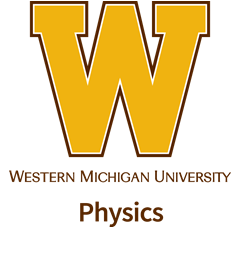Speaker
Dr
Taisuke Nagayama
(Sandia National Laboratories)
Description
Model predictions for iron opacity are notably different from measurements performed at matter conditions similar to the boundary between the solar radiation and convection zones [1]. The calculated iron opacities have narrower spectral lines, weaker quasi-continuum at short wavelength, and deeper opacity windows than the measurements. If correct, these measurements help resolve a decade old problem in solar physics. A key question is therefore: What is responsible for the model-data discrepancy? The answer is complex because the experiments are challenging and opacity theories depend on multiple entangled physical processes such as the influence of completeness and accuracy of atomic states, line broadening, and contributions from myriad transitions from excited states. To help determine the cause of this discrepancy, a systematic study of opacity variation with temperature, density, and atomic number is underway. Measurements of chromium, iron, and nickel opacities have been performed at two different temperatures and densities. The collection of measured opacities provides constraints on hypotheses to explain the discrepancy. We will discuss implications of measured opacities, experimental errors, and possible opacity model refinements.
R. More is retired from the National Institute for Fusion Science, Toki, Gifu, Japan.
++ Sandia National Laboratories is a multi-mission laboratory managed and operated by National Technology and Engineering Solutions of Sandia, LLC., a wholly owned subsidiary of Honeywell International, Inc., for the U.S. Department of Energy’s National Nuclear Security Administration under contract DE-NA0003525.
[1] J.E. Bailey et al., Nature 517, 56 (2015).
Author
Dr
Taisuke Nagayama
(Sandia National Laboratories)
Co-authors
Prof.
Anil Pradhan
(Ohio State University)
Dr
Brian G. Wilson
(Lawrence Livermore National Laboratory)
Dr
Carlos A. Iglesias
(Lawrence Livermore National Laboratory)
Dr
Christophe Blancard
(Commissariat a l'Energie Atomique (CEA))
Dr
Christopher J. Fontes
(Los Alamos National Laboratory)
Dr
Christopher Orban
(Ohio State University)
Dr
David P. Kilcrease
(Los Alamos National Laboratory)
Dr
Franck Gilleron
(Commissariat a l'Energie Atomique (CEA))
Dr
Gerald Faussurier
(Commissariat a l'Energie Atomique (CEA))
Dr
Gregory A. Rochau
(Sandia National Laboratories)
Dr
Guillaume Loisel
(Sandia National Laboratories)
Dr
Igor Golovkin
(Prism Computational Sciences)
Dr
James Colgan
(Los Alamos National Laboratory)
Dr
James E. Bailey
(Sandia National Laboratories)
Dr
Jean-Christophe Pain
(Commissariat a l'Energie Atomique (CEA))
Dr
Joseph J. MacFarlane
(Prism Computational Sciences)
Dr
Manolo Sherrill
(Los Alamos National Laboratory)
Dr
Philippe Cosse
(Commissariat a l'Energie Atomique (CEA))
Dr
Richard More
(Sandia National Laboratories)
Prof.
Roberto C. Mancini
(University of Nevada, Reno)
Dr
Stephanie B. Hansen
(Sandia National Laboratories)
Prof.
Sultana Nahar
(Ohio State University)

